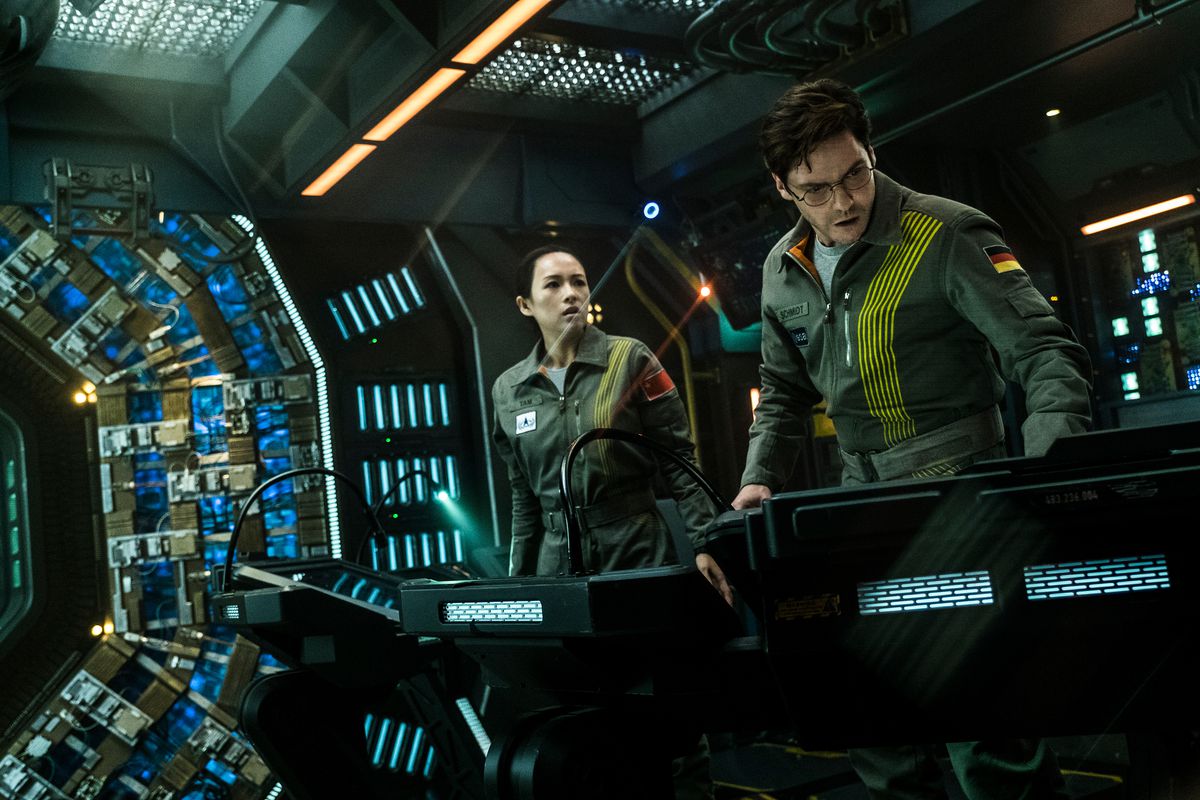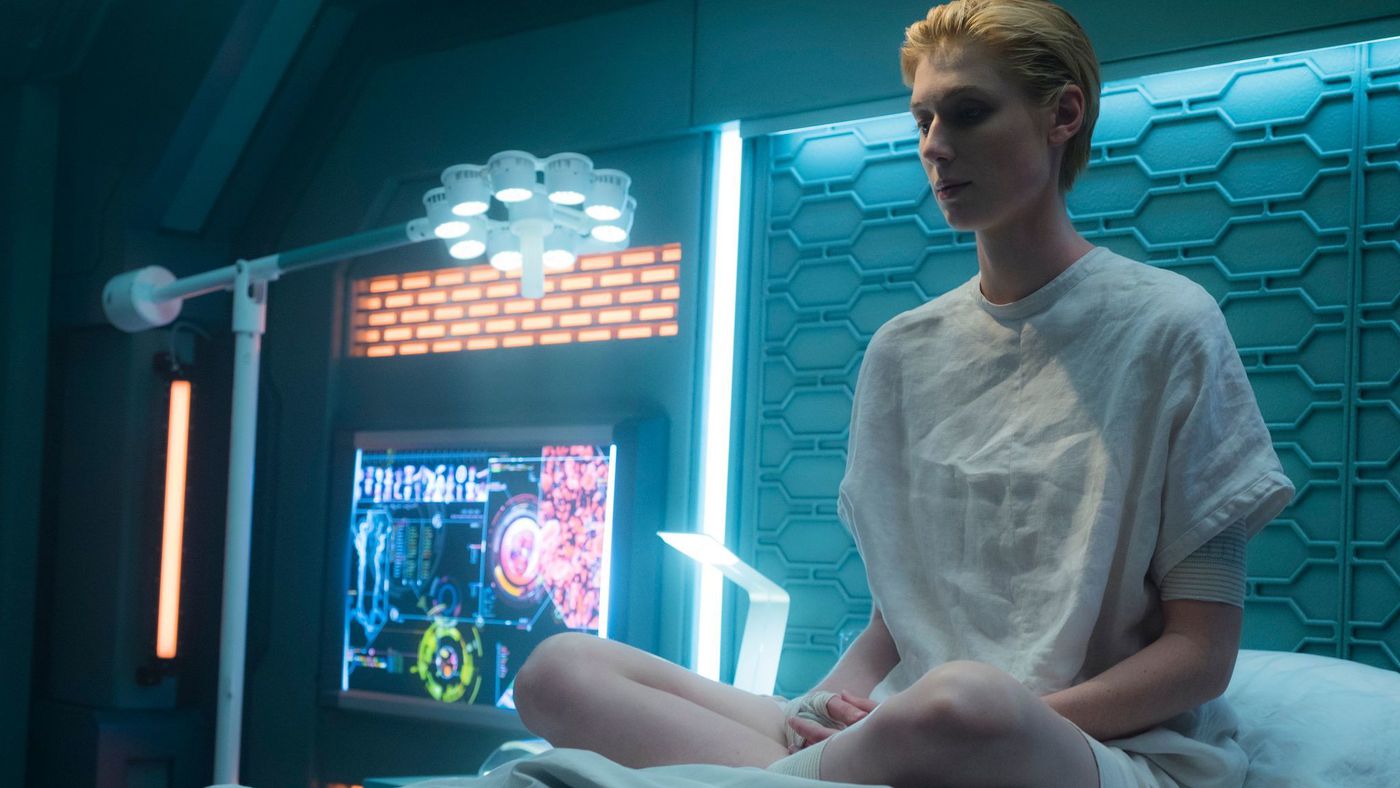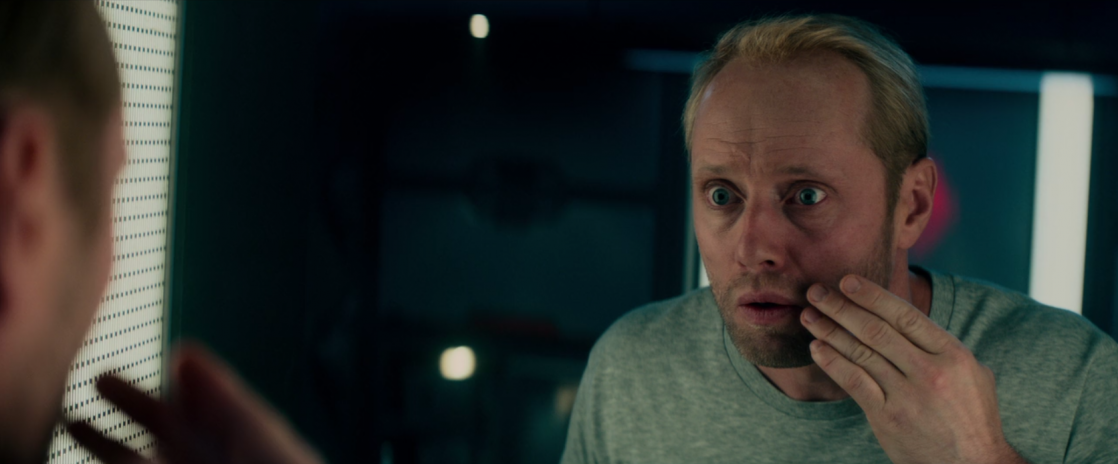The Cloverfield Paradox: How God Particle Changed
With spoilers, we look at how God Particle became The Cloverfield Paradox - and changed almost beyond recognition in the process...
NB: Your final warning for major Cloverfield Paradox spoilers from the outset.
It says a great deal about our topsy-turvy, lightning-paced cultural landscape that we can now watch a trailer for a (fairly) major film release one minute and be watching it on Netflix the next. In the case of The Cloverfield Paradox, that’s exactly what happened: the secretive movie once known as “God Particle” got its first trailer during the Super Bowl on Feb. 4, and within hours, had made its debut on the streaming platform.
Then again, secrecy and strange surprises are written into the Cloverfield franchise’s DNA. A found-footage take on the giant monster genre, the original film’s viral marketing turned it into a major talking point before its release in 2008. Rather than compete with that year’s big theatrical releases head-on, Cloverfield‘s marketing department used viral websites and alternate reality games to drum up interest.
The loosely-connected spin-off 10 Cloverfield Lane, released in 2016, was similarly secretive – partly because it wasn’t even part of the Cloverfield franchise until late in production, when the decision was made to make it a self-contained offshoot set in the same universe as the 2008 film. When trailers landed for 10 Cloverfield Lane that January, with its release date pegged for a few weeks later, its new title was apparently as much of a surprise to the actors starring in it – Mary Elizabeth Winstead, John Goodman and John Gallagher Jr – as it was for the rest of us.
The Cloverfield Paradox had a similarly curious path to the screen. It began life as a spec script called The God Particle, written in 2012 by Oren Uziel, later known for his work on 22 Jump Street and Netflix thriller Shimmer Lake. During production, rewrites were made to help tie in what was once an original story to the monster-filled Cloverfield franchise, owned by producer J.J. Abrams’ production company, Bad Robot.
If you’ve seen The Cloverfield Paradox, you know the result: a curious sci-fi mash-up that recalls such disparate genre films as Solaris, The Thing, Gravity, Sunshine, Interstellar, Event Horizon, Prometheus, and, of all things, The Evil Dead. Like 10 Cloverfield Lane before it, Paradox‘s connection to its 2008 forebear is largely tangential. The film suggests that a particle accelerator aboard an orbiting space station managed to tear a hole in the fabric of time and space, opening up a portal into a world of demons and monsters – thus explaining where that screeching kaiju from Cloverfield came from.
Unlike 10 Cloverfield Lane, however, it’s probably fair to say that Paradox doesn’t quite succeed on its own terms. Where that earlier film was a taut thriller in a confined space, with its Cloverfield stuff barely figuring in until the last 10 minutes, Paradox feels far more disjointed. It adds a bit of space horror here, a small dash of hard sci-fi there, a few dollops of black comedy, and then a monster at the end as an abrupt sign-off.

There are more than a few memorable moments in Paradox, thanks in no small part to director Julius Onah and Dan Mindel’s atmospheric cinematography – the shrieking woman discovered in a wall, Chris O’Dowd’s apparently sentient severed arm, Aksel Hennie’s roving eye and terminal case of worms. Sadly, these pleasingly nasty images are somewhat lost in a plot that never quite gets going. By the final act, with its disintegrating space station and heroic self-sacrifice, Paradox‘s best ideas are already far behind it.
Given all the ideas roaming about in Paradox, it’s probably not too surprising that the original script written by Oren Uziel was very different from the finished film. In fact, beyond the space station setting and some vague stuff about particle accelerators, the two stories have about as much in common as Star Wars and Rambo: First Blood Part II.
Although the script we’ve read isn’t dated, it was clearly written long before God Particle had anything to do with Cloverfield. What follows is a comparison between this early draft and the Paradox movie now on Netflix.
God Particle

Let’s start with the similarities first. Both stories are told largely from the POV of a protagonist named Hamilton (played with typical assurance by Gugu Mbatha-Raw in the movie). Both take place in a near future where experiments are being conducted on a huge space station (here called the Dandelion) – experiments that involve smashing particles together in order to study the results. Hamilton’s joined by a bunch of crewmembers with almost identical names to the ones in The Cloverfield Paradox; there’s a guy named Mundy, who serves as the slacker-cool comic relief (he was the one played by Chris O’Dowd in the film), and one named Monk, who’s all religious (he was John Ortiz).
The space station is well equipped for years of survival in space, which is just as well – when the collider’s switched on, it has an immediate and unexpected side-effect: the Earth and Moon immediately vanish. In both script and screenplay, there’s much talk about whether their experiment has destroyed their home planet. Understandably, this notion causes a considerable amount of tension among the crew.
Hereafter, the two stories diverge rapidly and drastically. In Paradox, the particle smashing results in another side-effect, where reality itself appears to be on the verge of falling apart – hence the screaming woman in the wall (Elizabeth Debicki), the explosive worm vomiting, and Chris O’Dowd’s crawling arm. Precisely none of this is in Uziel’s original spec script. Instead, it unfolds as a kind of hard-SF murder mystery more in the vein of Arthur C. Clarke than the horror-tinged madness of Paradox.

It’s worth rewinding here to explain something about God Particle’s back story. For undisclosed reasons, Europe and the United States are in the midst of what appears to be World War III, giving the plot a Cold War air of tension akin to Peter Hyams’ old film, 2010: The Year We Made Contact (itself based on an Arthur C. Clarke book). In Paradox, this morphs into the idea that Earth’s energy resources are dwindling, and that the lack of fuel threatens to spark a major conflict. To avert the crisis, an international crew is assembled to smash particles together in the hopes of creating an infinite supply of clean energy.
In the script, the crew on the space station are all American – which causes something of a problem when a space shuttle containing four European survivors of the vanished Earth floats into view. The European astronauts – Tam, Gireaux, Schmidt, and, brilliantly, Wible – seem friendly enough, yet the old conflict back on Earth leaves the crew of the space station decidedly nervous. What if they’re secretly plotting to kill the Americans and take over the station?
After putting the matter to a vote, the Americans allow the European astronauts to board the Dandelion, and at first, everything seems fine. But when one of the Americans – Hamilton’s lover, Flynn – keels over and dies at the dinner table, relations rapidly disintegrate. Tests reveal that Flynn was poisoned. The Europeans are placed into a secure chamber, yet still, American crewmembers keep dying, one by one. This poses the question: is the true enemy among the Europeans, or in the American camp?
As the bodycount rises, a further revelation adds to the unease: the particle accelerator aboard the station is actually an experimental bomb, which the US government had hoped they could use as a deterrent that would, in turn, convince the Europeans to surrender. Only two scientists among the Americans – Martinez and Cosbi – know about the experiment. Indeed, the bomb was so secret that Martinez and Cosbi were under orders to assassinate everyone aboard the Dandelion after the test detonation – assuming, of course, that it was a success.

We won’t spoil the reveal to the mystery for you here – the script’s lurking online if you search for it – but you’ve probably gathered by now that its differences from The Cloverfield Paradox are considerable. Even as God Particle flips from Agatha Christie thriller to deep space action (complete with machine guns) in the third act, it remains logical and true to its own basic premise. There are no cuts to secondary characters huddled in bunkers, no worm vomiting, and certainly no giant monsters looming through clouds. To cap it all, the script’s suggestion that the Higgs boson particle could be split does appear to be based on recent scientific thinking.
This isn’t to say, however, that God Particle is a lost classic. Although the characters are a little more distinct than the ones in Paradox, they’re even more mired in stereotypes: the first thing the Chinese character, Tam, does when boarding the space station is cook a stir fry in a huge wok. Gireaux is simply described as “the French beauty” and nothing more. A German named Schmidt is dismissed as humorless and compared to Werner Herzog. And so on.
Much of this could have been polished out in subsequent rewrites, and, indeed, maybe it was: the rival factions of U.S. and European astronauts was changed to a single international crew, and, in the process of its shift to a Cloverfield spin-off, its plot moved from mystery-thriller to pseudo survival horror. Although Uziel is still credited as The Cloverfield Paradox‘s sole screenwriter, Doug Jung also gets a “story by” credit. It’s possible, then, that the more out-there elements in Paradox came from Jung, given how vastly they differ from the tone of Uziel’s earlier draft.
A Path Not Traveled
Whatever happened during Paradox‘s production, the script’s genesis as a standalone, relatively low-key sci-fi thriller could be taken as a sign of how tough the movie landscape’s becoming. In a 2017 interview with Collider, Uziel himself admits that God Particle would’ve been tough to market had it not been swept under the Cloverfield banner:
“I don’t know exactly when it became a Cloverfield movie, but I suspect in this current market where it’s just harder and harder to market an original movie of any kind, a science-fiction movie in particular, but I think everyone just knew if it fits – and it does – into that Cloverfield world, it should, and it can only help.”
Original sci-fi films like Gravity and Arrival have enjoyed plenty of success in recent years, but the genre remains an expensive and risky one: Passengers and Life both struggled. Even Alien: Covenant, with the benefit of its attachment to a long-running franchise, didn’t quite land. As a result, we’ve seen a number of original sci-fi films alter trajectory, with Paramount sending Alex Garland’s Annihiliation straight to Netflix outside the US. Despite 10 Cloverfield Lane‘s buoyant performance in 2016, The Cloverfield Paradox eventually went the same way.
We found much to enjoy in The Cloverfield Paradox, even though we found it a difficult film to recommend in the final analysis. Strange though its moments of horror are, we’d have liked to have seen the elements of surrealism taken further – a movie where the characters have to deal with the psychological toll of a disintegrating reality would’ve felt far more fresh than the Gravity-like final third we actually got. (An old short story called “Scattershot” by the author Greg Bear, full of scrambled realities and talking bears, is an entertaining take on this concept.)
Then again, God Particle would’ve made a solid sci-fi thriller as it was, despite its own flaws. Maybe there’s an alternate dimension where franchises aren’t the dominant force in mainstream filmmaking, where Uziel’s spec script got adapted for the screen in its unmodified form. Unless a large Hadron collider tears open a whole in reality and takes us to that dimension, we’ll never get to see it. Instead, we can only look at the original God Particle screenplay and wonder what might have been.
The Geek’s Guide to SF Cinema: 30 Key Films That Revolutionised The Genre is out on the 15th February, published by Robinson. It’s available in the UK from Amazon and The Book Depository, in Australia from Dymocks and Amazon and in New Zealand from Mighty Ape.